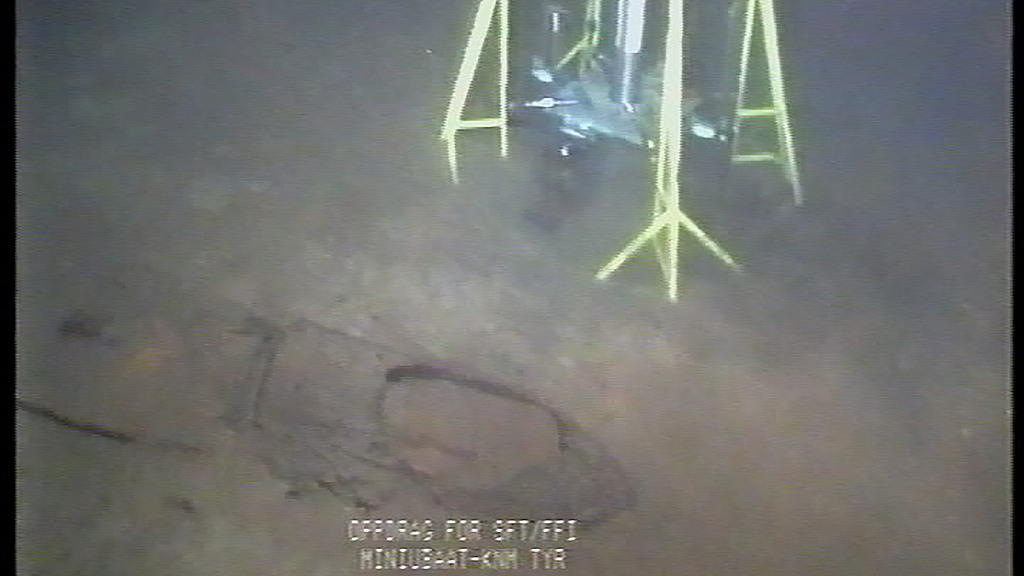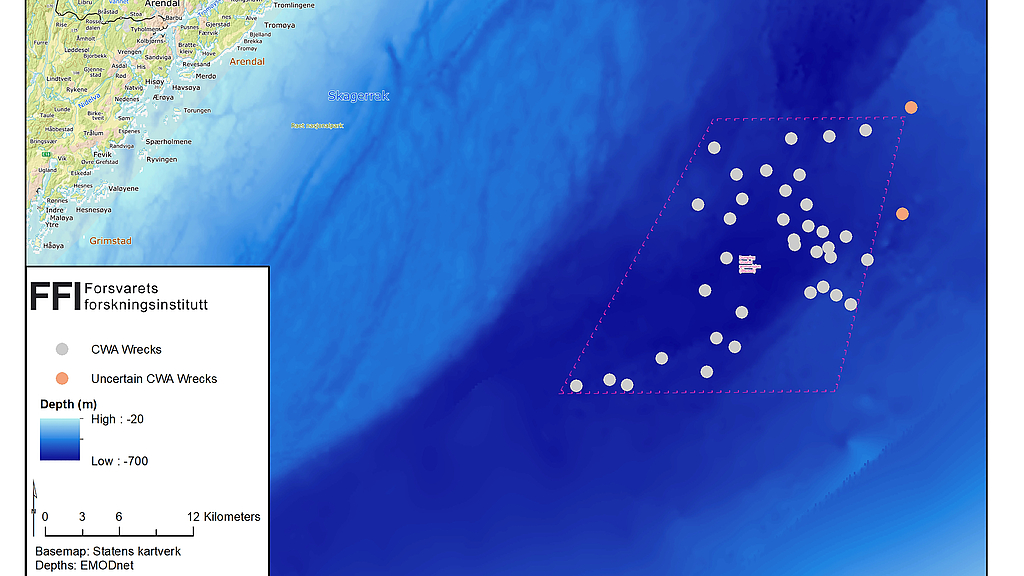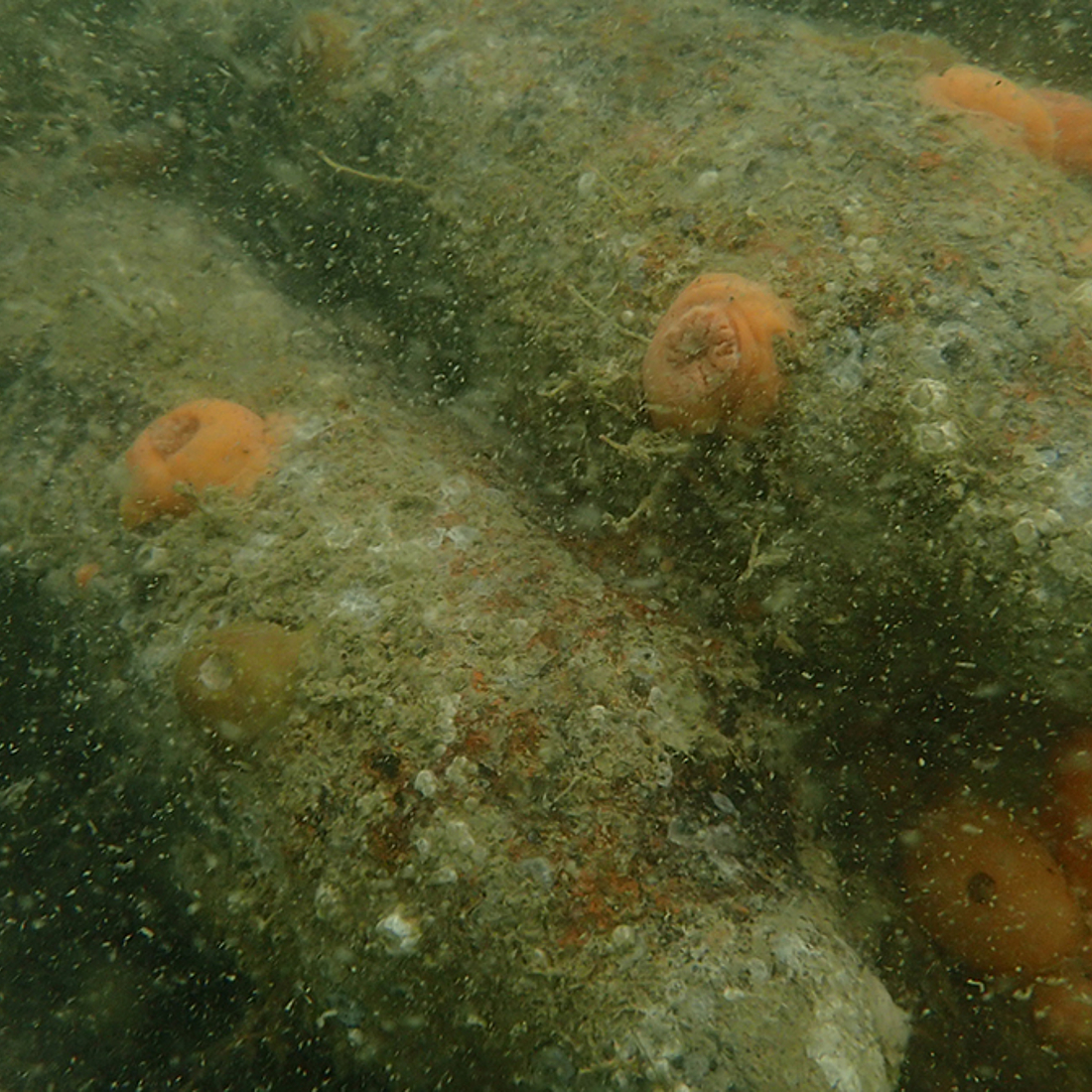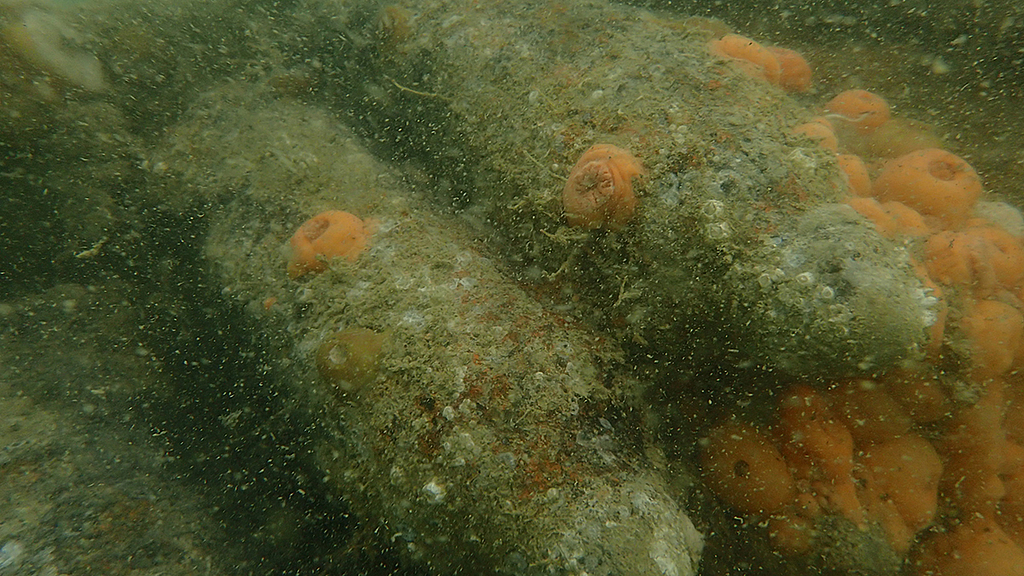Dumping of chemical ammunition in Skagerrak
Large amounts of chemical ammunitions were dumped at sea in many locations worldwide just after the Second World War. Much of the German stocks were loaded on to ships and sunk in the deepest part of Skagerrak, outside the Norwegian and Swedish territorial waters.
Norwegian authorities gave permission to such dumping at 600-700 m depth, 25 nautical miles southeast of Arendal. Between 130 000 and 160 000 tonnes (gross weight) of chemical ammunition containing between 41 000 and 48 000 tonnes of chemical warfare agents may have been dumped in Skagerrak between 1945 and 1947.
The numerous public protests against dumping in Skagerrak caused the last ships to be scuttled at 1000 m depth in the Norwegian Sea, north of the 63rd latitude, in 1948.
The Norwegian Research Establishment (FFI) carried out investigations of some of the scuttled wrecks southeast of Arendal by remotely operated vehicles in 1989 and in 2002. Aerial bombs rusted through by corrosion with most of the content leaked out were observed close to the wrecks (Picture 1).
A detailed survey of the relevant area in the Norwegian part of Skagerrak by the HUGIN autonomous underwater vehicle was conducted in 2015-2016. In the search area, 36 wrecks possibly related to the scuttling of chemical warfare agents after Second World War were identified (map in Picture 2).
We cannot exclude the possibility that more wrecks were scuttled outside the area searched in 2015-2016. Two wrecks were recently located outside the area marked as “Explosive dumping ground”.
Sediment samples were collected near some of the wrecks in 2002 and in 2018. Ten different chemical warfare agents and decomposition products were identified in the samples.
Hagfish were collected and analysed for chemical weapons (CW) and some of their decomposition products. Minute amounts of arsenic containing CW-related agents have been found in hagfish samples.
The hagfish were also examined for possible adverse effects from the dumping. Differences in the selected biomarkers indicate negative biological impact to the hagfish sampled close to the dumped chemical munitions.
No significant differences in histopathology (microscopic examination of tissue) between biota samples near the wreck and from a reference position were observed. However, a higher frequency of non-specific lesions was found in liver from the CWA dumping site compared to the reference sites.
Further literature and online links
Ahvo, Aino, KK Lehtonen, Anu Lastumäki, Katharina Straumer, Marianne Kraugerud, SW Feist, Thomas Lang, and John Aasulf Tørnes. 2020. “The Use of Atlantic Hagfish (Myxine Glutinosa) as a Bioindicator Species for Studies on Effects of Dumped Chemical Warfare Agents in the Skagerrak. 2. Biochemical Biomarkers.” Marine Environmental Research 162: 105097, https://doi.org/10.1016/j.marenvres.2020.105097.
Straumer, K, M Kraugerud, SW Feist, A Ahvo, K Lehtonen, A Lastumäki, M Ljønes, J Aa Tørnes, and T Lang. 2020. “The Use of Atlantic Hagfish (Myxine Glutinosa) as a Bioindicator Species for Studies on Effects of Dumped Chemical Warfare Agents in the Skagerrak. 1: Liver Histopathology.” Marine Environmental Research 161: 105046, (https://doi.org/10.1016/j.marenvres.2020.105046).
Tørnes, John Aasulf, Aase Mari Opstad, and Bjørn Arne Johnsen. 2006. “Determination of Organoarsenic Warfare Agents in Sediment Samples from Skagerrak by Gas Chromatography-Mass Spectrometry.” Science of the Total Environment 356 (1–3): 235–46, https://doi.org/10.1016/j.scitotenv.2005.03.031.

An aerial bomb perforated by corrosion near a multicorner that collected 2002
collected sediment samples
© Norwegian Defence Research Establishment (FFI)

Map showing located wrecks in the area in Skagerrak where ships loaded with ammunition containing chemical warfare agents (CWA) were scuttled after World War II © Norwegian Defence Research Establishment
Partner
-


